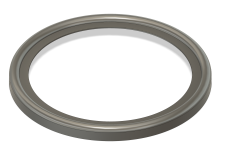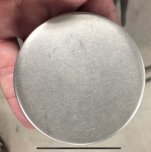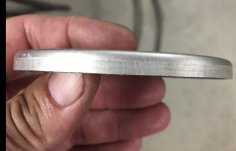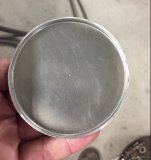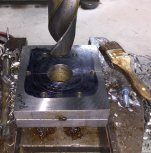zpelgrims
Plastic
- Joined
- Feb 12, 2024
- Location
- Central europe
Hi.
New here, and relatively new to the machining craft as well.
I am looking for advice on how to create a die in order to create a specific shape. The shape looks like this. The sheet metal (likely mild or stainless) is 1mm thick. I am also making the blanking dies for inner and outer diameter blanking. I am remaking an existing part of a lamp. Small production volume. Outer diameter of the unformed blank is 120mm. I am 99% sure the original part was also formed in a die, so it must be possible..
Before I commence making the die set, I would like to tick off some (likely, since I am new at this) common mistakes...
New here, and relatively new to the machining craft as well.
I am looking for advice on how to create a die in order to create a specific shape. The shape looks like this. The sheet metal (likely mild or stainless) is 1mm thick. I am also making the blanking dies for inner and outer diameter blanking. I am remaking an existing part of a lamp. Small production volume. Outer diameter of the unformed blank is 120mm. I am 99% sure the original part was also formed in a die, so it must be possible..
Before I commence making the die set, I would like to tick off some (likely, since I am new at this) common mistakes...
- Should I blank the inner and outer diameter before forming the part?
- To achieve the rounded shape, should I push a positive feature into a square cavity, not touching the end of the cavity? Or should I make matching positive/negative features and press until both meet?
- How can I design the die so the part will be removable? I am worried about the extremely sloping sides. I feel like this will squeeze and stretch the metal between the die, making it nearly impossible to remove. How is this usually done? I understand springs can be used as ejectors, but it seems to me the clamping forces would be excessive for any spring I could fit into this die design.
- Is it possible to achieve the amount of deformation we see on the sides with a small hydraulic press? I think it's probably around 15 tons - unfortunately there is no pressure rating on the press as it was home-built some 50 years ago.
Any other pointers are also very welcome...
